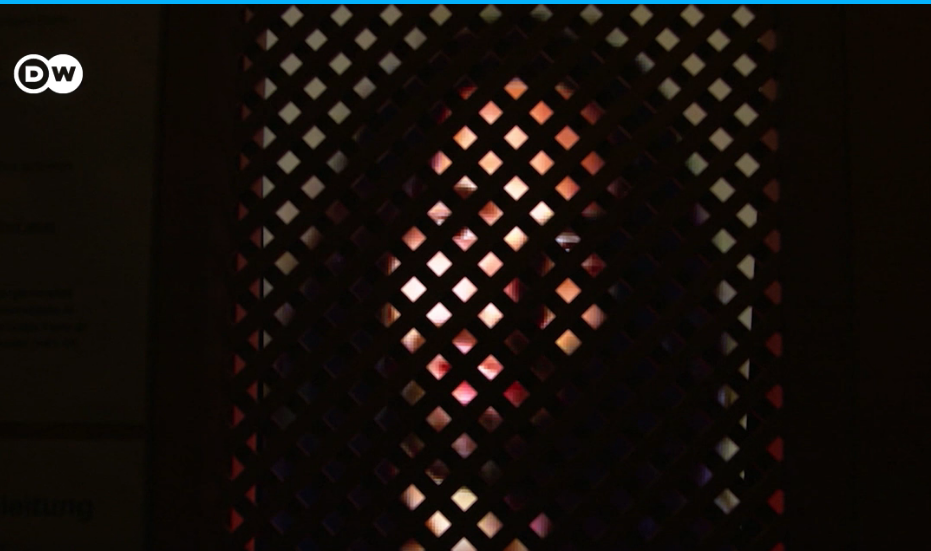Digital Devotion: AI Jesus Confessional in Switzerland Sparks Debate

St Peter’s church in Lucerne, Switzerland, has introduced an AI-powered confessional featuring a Jesus avatar as part of a two-month art installation called “Deus in Machina.” This collaboration between the church and a local university aims to provoke discussion on technology’s role in faith. The AI, trained on New Testament texts, interacts with users 24/7 through a wooden enclosure. While some parishioners find the experience helpful, others view it as a gimmick. The installation raises ethical concerns, particularly regarding privacy and the limitations of AI in spiritual contexts. This experiment highlights the complex intersection of artificial intelligence and religion, challenging traditional notions of faith practices while exploring potential technological applications in spiritual guidance.
Introduction
In a bold move that merges cutting-edge technology with centuries-old religious practices, St Peter’s church in Lucerne, Switzerland, has unveiled an AI-powered confessional featuring a Jesus avatar ¹. This innovative installation, named “Deus in Machina”, is the result of a collaboration between the church and a research lab at the local university. The two-month experiment aims to spark discussions about the role of technology in faith and explore the intersection of artificial intelligence and religion.
The AI Jesus Confessional: An Overview
The “Deus in Machina” installation consists of an AI-powered system housed within a traditional wooden confessional. Users can interact with the Jesus avatar by pressing a button and voicing their questions or concerns. The avatar, visible inside the enclosure, processes the input and generates responses based on its training on New Testament texts.
Marco Schmid, a theological worker at St Peter’s, emphasizes the church’s role in engaging with social developments such as AI. He states, “AI fascinates us, but it also has its limits and raises ethical questions” ¹. The installation is not intended to replace the sacrament of confession but rather to provoke thought and discussion about the intersection of faith and technology.
Technology and Interaction Process
The AI Jesus confessional operates through a simple interaction process. Users activate the system by pressing a button and then voice their questions or concerns. The AI, trained on New Testament texts, processes the input and generates responses delivered via the visible avatar.
One notable feature of the technology is its ability to recognize voices, although it sometimes misidentifies gender. As observed in a reporter’s interaction, “Jesus recognises my voice, but not my gender” (Anna Jungen, SRF) ¹. This highlights both the capabilities and limitations of the current AI system.
Ensuring that the theological interpretation aligns with St Peter’s church views is an ongoing challenge. Marco Schmid notes, “In all previous tests, its answers have matched the theological view of St Peter’s church” ¹. Regular testing is required to confirm compatibility and address any discrepancies that may arise due to the AI’s training on diverse online religious content.

User Reactions and Experiences
Parishioner reactions to the AI Jesus confessional have been mixed, ranging from enthusiasm to skepticism. Some users found the experience surprisingly helpful and easy. As one parishioner enthused, “I was surprised. It was so easy! Though it’s a machine, it gave me so much advice” ².
Others, however, were less impressed and dismissed the installation as a cheap entertainment. One user commented, “I see it as a gimmick”², after receiving what they perceived as a stock response to a question about ending violence.
A reporter’s experience conversing with the avatar revealed both strengths and limitations of the AI system. The interaction was described as fascinating, with the AI providing meaningful, empathetic, and smart answers. However, the reporter also noted that at times, the responses were “trite, repetitive and exudes a wisdom sometimes more reminiscent of calendar clichés than theological insights” ¹.
Ethical Considerations and Limitations
The AI Jesus confessional raises several ethical concerns and highlights the limitations of AI in spiritual contexts. Privacy is a primary concern, with the AI itself warning parishioners not to share any personal data, including sins. This caution underscores the potential risks associated with digital interactions in sensitive religious settings.
The installation also prompts questions about the role of human clergy and the nature of spiritual guidance. Critics argue that the nuanced, empathetic understanding provided by human priests cannot be fully replicated by machines, emphasizing the continued importance of human involvement in spiritual experiences.
Marco Schmid acknowledges these limitations, stating, “I’m glad that the avatar still comes across to a certain extent as a technical object. At the same time, the answers it gives are also fascinating. So there’s plenty to talk about when it comes to AI in a religious context” ¹.
Conclusion
The AI Jesus confessional in Lucerne represents a thought-provoking experiment at the intersection of technology and faith. While it offers convenience and accessibility, it also raises important questions about the role of AI in religious practices and the limitations of machine-generated spiritual guidance.
As AI continues to integrate into various aspects of daily life, its potential applications in faith communities remain a subject of debate. The “Deus in Machina” installation serves as a catalyst for dialogue about how technology and tradition can coexist in the realm of spirituality.
Ultimately, this experiment highlights both the potential and the challenges of incorporating AI into religious practices. It invites us to consider the future of faith in an increasingly digital world while recognizing the enduring value of human connection and understanding in spiritual matters.
Sources: